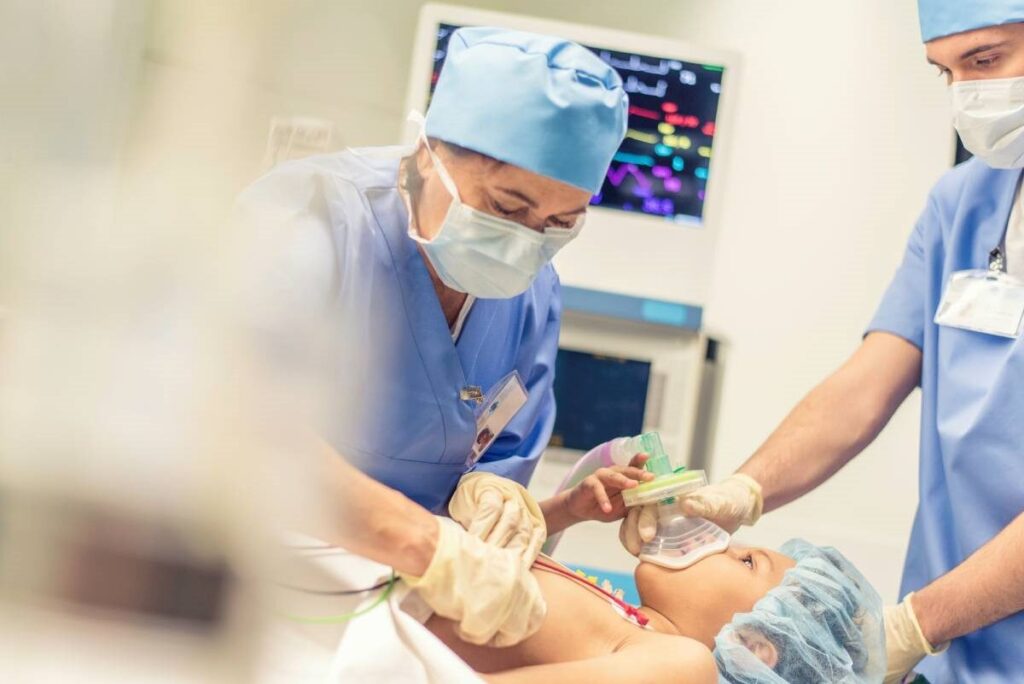Pediatric anesthesia presents unique challenges and considerations compared to adult anesthesia, requiring specialized knowledge and techniques to ensure safe and effective care. The fundamental differences between pediatric and adult patients stem from their distinct anatomical, physiological, and psychological characteristics, which significantly impact anesthetic management.
One of the most notable differences between pediatric and adult anesthesia lies in the airway anatomy of pediatric patients. Children have larger tongues relative to their oral cavity, omega-shaped epiglottises, and more cranially positioned larynxes, making airway management more challenging. The cricoid ring is the narrowest part of the pediatric airway, unlike in adults where the vocal cords are the narrowest point. These anatomical differences contribute to a higher incidence of airway-related complications in children, with studies reporting that respiratory events account for up to 30% of perioperative critical incidents in pediatric anesthesia.
Physiologically, children have higher metabolic rates and oxygen consumption compared to adults. Their oxygen consumption can be up to 6-8 mL/kg/min, nearly double that of adults. This, combined with their smaller functional residual capacity, leads to a more rapid onset of desaturation during periods of apnea or hypoventilation. Children also have a higher cardiac output relative to body weight and a less developed autonomic nervous system, resulting in a greater reliance on heart rate to maintain cardiac output. Consequently, bradycardia in children can rapidly lead to significant hemodynamic instability.
Pharmacokinetics and pharmacodynamics differ substantially between pediatric and adult patients. Children generally require higher doses of anesthetic agents on a per-kilogram basis due to their larger volume of distribution and higher metabolic rates. For example, the induction dose of propofol in children aged 3-11 years is typically 2.5-3.5 mg/kg, compared to 1.5-2.5 mg/kg in adults. However, the variability in drug responses among different age groups within the pediatric population necessitates careful titration and individualized dosing.
Psychological factors typically play a larger role in pediatric anesthesia compared to adult anesthesia. Preoperative anxiety affects up to 65% of children undergoing surgery and can lead to postoperative behavioral changes in up to 60% of cases. Strategies to mitigate anxiety, such as parental presence during induction, distraction techniques, and age-appropriate premedication, are integral components of pediatric anesthetic management.
Temperature regulation is another critical aspect that differs between pediatric and adult anesthesia patients. Children, especially neonates and infants, have a larger surface area to volume ratio and less subcutaneous fat, making them more prone to hypothermia. Studies have shown that up to 20% of pediatric patients experience inadvertent perioperative hypothermia, which can lead to increased morbidity and delayed recovery. Furthermore, the risk of postoperative nausea and vomiting is generally higher in children, with an incidence of up to
42% in high-risk groups compared to about 30% in adults. This necessitates a more aggressive approach to postoperative nausea and vomiting prophylaxis in pediatric patients.
Pediatric anesthesia requires a specialized approach that takes into account the unique anatomical, physiological, and psychological characteristics of children. Physicians caring for pediatric patients must be well-versed in these differences and adapt their techniques accordingly to ensure optimal outcomes. Ongoing research and education in pediatric anesthesia continue to refine our understanding and improve the safety and efficacy of anesthetic care for our youngest patients.
References
1. Cote CJ, Lerman J, Anderson BJ. A Practice of Anesthesia for Infants and Children. 6th ed. Philadelphia, PA: Elsevier; 2018.
2. Habre W, Disma N, Virag K, et al. Incidence of severe critical events in paediatric anaesthesia (APRICOT): a prospective multicentre observational study in 261 hospitals in Europe. Lancet Respir Med. 2017;5(5):412-425.
3. Davidson AJ, Disma N, de Graaff JC, et al. Neurodevelopmental outcome at 2 years of age after general anaesthesia and awake-regional anaesthesia in infancy (GAS): an international multicentre, randomised controlled trial. Lancet. 2016;387(10015):239-250.
4. Zielinska M, Bartkowska-Sniatkowska A, Becke K, et al. Safe pediatric procedural sedation and analgesia by anesthesiologists for elective procedures: A clinical practice statement from the European Society for Paediatric Anaesthesiology. Paediatr Anaesth. 2019;29(6):583-590.
5. Matava CT, Kovatsis PG, Lee JK, et al. Pediatric Airway Management in COVID-19 Patients: Consensus Guidelines From the Society for Pediatric Anesthesia’s Pediatric Difficult Intubation Collaborative and the Canadian Pediatric Anesthesia Society. Anesth Analg. 2020;131(1):61-73.
